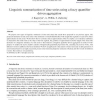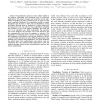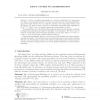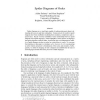1201 search results - page 164 / 241 » On the cardinality of fuzzy sets |
FSS
2008
14 years 8 months ago
2008
We propose new types of linguistic summaries of time-series data that extend those proposed in our previous papers. The proposed summaries of time series refer to the summaries of...
ICDE
2012
IEEE
13 years 7 days ago
2012
IEEE
—Fuzzy/similarity joins have been widely studied in the research community and extensively used in real-world applications. This paper proposes and evaluates several algorithms f...
164
click to vote
GIS
2008
ACM
15 years 11 months ago
2008
ACM
Many aspects of spatial language concerned with relationships between spatial entities are essentially vague. Current GIS technology provides very little support for dealing with ...
STACS
2010
Springer
15 years 4 months ago
2010
Springer
Given a k-uniform hypergraph on n vertices, partitioned in k equal parts such that every hyperedge includes one vertex from each part, the k-Dimensional Matching problem asks wheth...
VL
2007
IEEE
15 years 4 months ago
2007
IEEE
Spider diagrams are a visual logic capable of makeing statements about relationships between sets and their cardinalities. Various meta-level results for spider diagrams have been...




